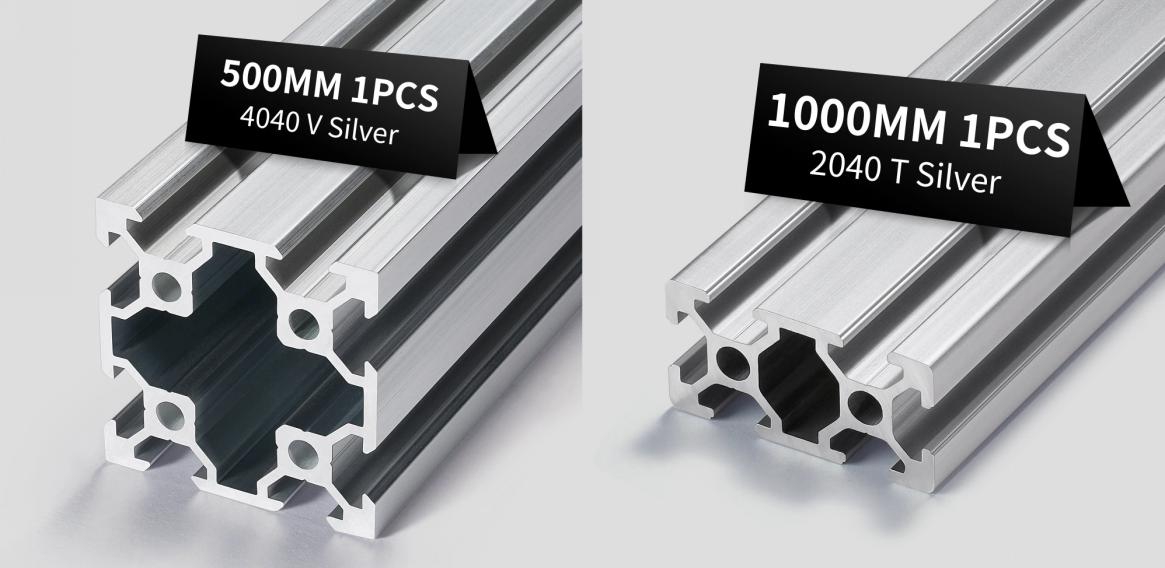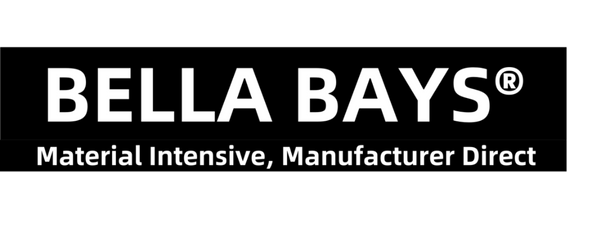
What Are the Key Features for 4040 Aluminum Extrusion and 2040 Aluminum?
4040 aluminum extrusion and 2040 aluminum extrusion are both types of aluminum profiles which are commonly used in structural applications. Aluminum profile is an aluminum material that involves shaping aluminum alloy into a specific cross-sectional profile by hot melting and extrusion. The process of aluminum profiles involves heating a solid aluminum billet and forcing it through an extrusion die to create the desired shape. The extrusion die determines the final sizes and characteristics of the extruded aluminum profile.

The producing process mainly includes the following steps:
Step 1: Preparing an extrusion die
The first step is to machine a round-shaped die. If you already have one, preheat it to about 450 - 500°C. Once the die has been preheated, you can load the die into the extrusion press.

Step 2: Preheat aluminum billet
Cut a thick cylindrical block of aluminum alloy which is called the aluminum billet from an elongated log of material. Then preheat it to about 450 - 500°C. This process makes it malleable enough to carry out the operation but not molten.

Step 3: Extrusion
Transfer the aluminum billet into the extrusion press mechanically after preheating, and then extrude it from the mold to form. During the extrusion process, use a hydraulic or mechanical press to push the heated aluminum billet through the mold. The applied pressure forces the aluminum billet to pass through the shaped opening, forming a continuous length of of the desired profile. Then the extruded aluminum is then cooled and cut into the desired lengths.

Step 4: Heat treatment
The surface corrosion resistance of extruded aluminum alloy profiles is not strong. Improve the corrosion resistance, wear resistance and appearance of aluminum profiles through anodizing.

The above is the production process of aluminum profiles. The aluminum profiles produced by this method, whether they are 4040 or 2040 aluminum profiles, have the following advantages.
- Lightweight
The density of aluminum profiles is about one-third of the density of steel or copper. Compared to the material such as steel or copper, aluminum profiles are relatively lightweight. This makes it easy to handle, transport and install, thereby reducing the cost of the entire project.
- High strength and durability
Aluminum profiles have high strength and they can withstand heavy loads and resist deformation, ensuring long-lasting performance. Aluminum profiles are known for their high strength to weight ratio, making them a durable and reliable material for various applications.
- Strong corrosion resistance
Aluminum naturally forms a protective oxide layer that helps prevent corrosion, so are the aluminum profiles. Aluminum profiles can exhibit its excellent corrosion resistance under the most environmental conditions such as air, water, salt water, petroleum and many chemical systems.
- Good thermal conductivity
Aluminum has excellent thermal conductivity, allowing for efficient heat dissipation. Aluminum profiles are made of aluminum alloy and they also have excellent thermal conductivity, conducting heat quickly. And this makes them suitable for the applications that require thermal management such as heat sinks, electronic component casings and other products that require heat dissipation performance.
- High universality
Aluminum profiles have high versatility and can be easily customized and modified to meet specific design requirements. They can be cut, drilled and assembled in different configurations, providing flexibility when creating structures or frameworks.
- Recyclable
Aluminum profiles are highly recyclable. they can be recycled multiple times to reduce waste and energy consumption without compromising their performance and quality.
- Aesthetic attractiveness
The smooth and modern appearance of aluminum profiles adds aesthetic appeal to structures or products. It is an attractive choice when visual appeal is needed for DIY projects or the applications such as retail displays or architectural frameworks.
- Easy to maintain
Aluminum profiles are smooth, which makes them resistant to dirt and debris buildup while also being easy to clean. And They can be easily cut, drilled, and assembled for maintenance.

In summary, the common advantages of 4040 and 2040 aluminum profiles include their light weight, high strength and durability, corrosion resistance, thermal conductivity, universality, recyclability, aesthetics and maintenance. But there are still some differences between the two types of aluminum profiles. When choosing the right aluminum profile for your needs, it is necessary to first know the key differences between 4040 and 2040 aluminum profiles.
To comparing 4040 and 2040 aluminum extrusion, there are a few key differences to consider:
- Size and profile
4040 aluminum profiles refer to specific types of aluminum profiles with dimensions of 40mm x 40mm. It is an equilateral square with both sides measuring 40mm. 4040 aluminum profiles are typically used to construct frames, brackets and structures that require strength and stability.
2040 aluminum profiles refer to specific types of aluminum profiles with dimensions of 20mm x 40mm. It is a rectangular extrusion with one side measuring 20mm and the other side measuring 40mm. 2040 aluminum profiles are typically used in applications that require a narrower profile while still maintaining strength and stiffness.


- Strength and load-bearing capacity
Due to differences in size, the 4040 aluminum profile is often stronger and harder than the 2040 aluminum profile. The 4040 aluminum profile has higher strength and load-bearing capacity. If you need a more sturdy and rigid structure, choosing the 4040 aluminum profile may be a better choice.

- Weight
Due to the larger size of the 4040 aluminum profile, it is usually heavier than the 2040 aluminum profile. So the 4040 aluminum profile provides higher stiffness, making it suitable for higher demand applications. Compared to the 4040 aluminum profile, the 2040 aluminum profile is usually lighter and it is advantageous in pursuing lightweight structures.
- Versatility
Both 4040 and 2040 aluminum profiles offer flexibility and versatility in terms of customization and modification.
The larger size of the 4040 aluminum profile provides more space for connecting accessories. And it also provides more possibilities for designing complex structures. It allows for more diverse configurations and can accommodate a wider range of accessories and brackets, enabling customization according to specific needs.
The smaller size of the 2040 aluminum profile makes it easier to handle and assemble. It is lighter and easier to manage, simplifying the construction process and being installed faster.

- Cost
In the case of equal length, 4040 aluminum profiles may be more expensive than 2040 aluminum profiles.
Compared to 4040 aluminum profiles, 2040 aluminum profiles are usually more cost-effective. If the application does not require increasing the strength and stiffness of larger aluminum profiles, you can use 2040 aluminum profiles to reduce the cost.

In addition, 4040 and 2040 aluminum profiles are typically designed to be compatible with each other. This compatibility allows for modular designs and easy integration between the aluminum profiles in different sizes. Construct larger and more complex structures by combining the two aluminum profiles, providing flexibility in constructing versatile and expandable structures.
In summary, choosing 4040 aluminum profiles or 2040 aluminum profiles depends on the specific requirements of your application, including required size and profile, strength and load-bearing capacity, weight, space limitations, and budget, etc.


Leave a comment